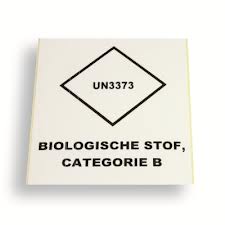Sending Diagnostic Samples

Diagnostic samples are classified under UN3373 and include all human materials including, among others, excrements, secretions, blood and blood components, tissue and tissue fluids, that are transported for diagnostic or research purposes.
The ADR has for each hazardous substance special packaging instructions to safe packaging. Packaging instruction P650 applies to the shipment of diagnostic samples (UN3373) by road. Packaging that meets P650 and has been tested are commercially available.
In this way, diagnostic samples are packaged securely enough to be further exempted from the ADR. They may be sent as (letter) mail or transported by 'normal' courier services on public roads.
Different (stricter) requirements apply to shipments by air. For transport by air, call in a specialized transport company. Ask your health and safety advisor (arboadviseur) or the safety advisor for the transport of hazardous substances.
Please note: Diagnostic samples suspected of containing category A infectious agents that are dangerous to humans (UN2814) or to animals (UN2900) are never exempt from ADR legislation, even if they are properly packaged. A specialized courier service must always be called in for this.
Refrigerated transport is allowed if the packaging is suitable and approved for it. Refrigerants are ice, dry ice (UN1845) or liquid nitrogen (UN1977). Suppliers have special approved packaging or suitable external gaskets available for this purpose, with labels and specific instructions. When sending infectious material (contaminated with microorganisms such as viruses and bacteria), the outer packaging must also meet the UN approval requirements.
